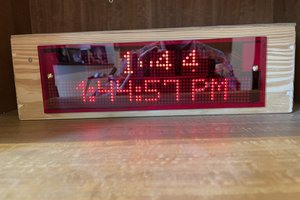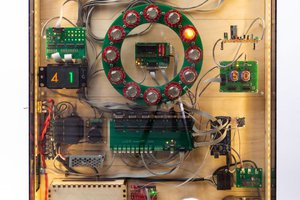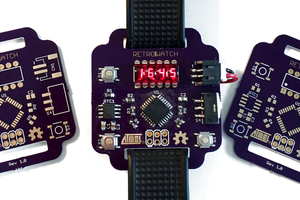This page about v1.0 of the RCCC could be more about wrestling with ancient file formats. The circuit board was designed using TurboCAD 9.0 for Windows. Not having a working Win32 environment, at the moment, will slow things down.
The basic idea was to have a credit card sized circuit board that did something, hopefully in an interesting way. This clock uses a battery-backed RTC for time keeping functions and the Z8 handles the display and time-setting functions. The blue segment of the 10 hour's LED is used as a light sensor. Aim a flashlight at that LED to trigger the the display to show the date, and again to start the set time process.


 mircemk
mircemk
 C
C
 Rafael Riber
Rafael Riber
Black was tricky. Settled on RGB 0,0,0. Ambient light bleeds in to it, but it's usually not too tough to figure out. At night, you have to guess where the zeros are but the small red seperator in the middle helps work out the spacing of the bands.